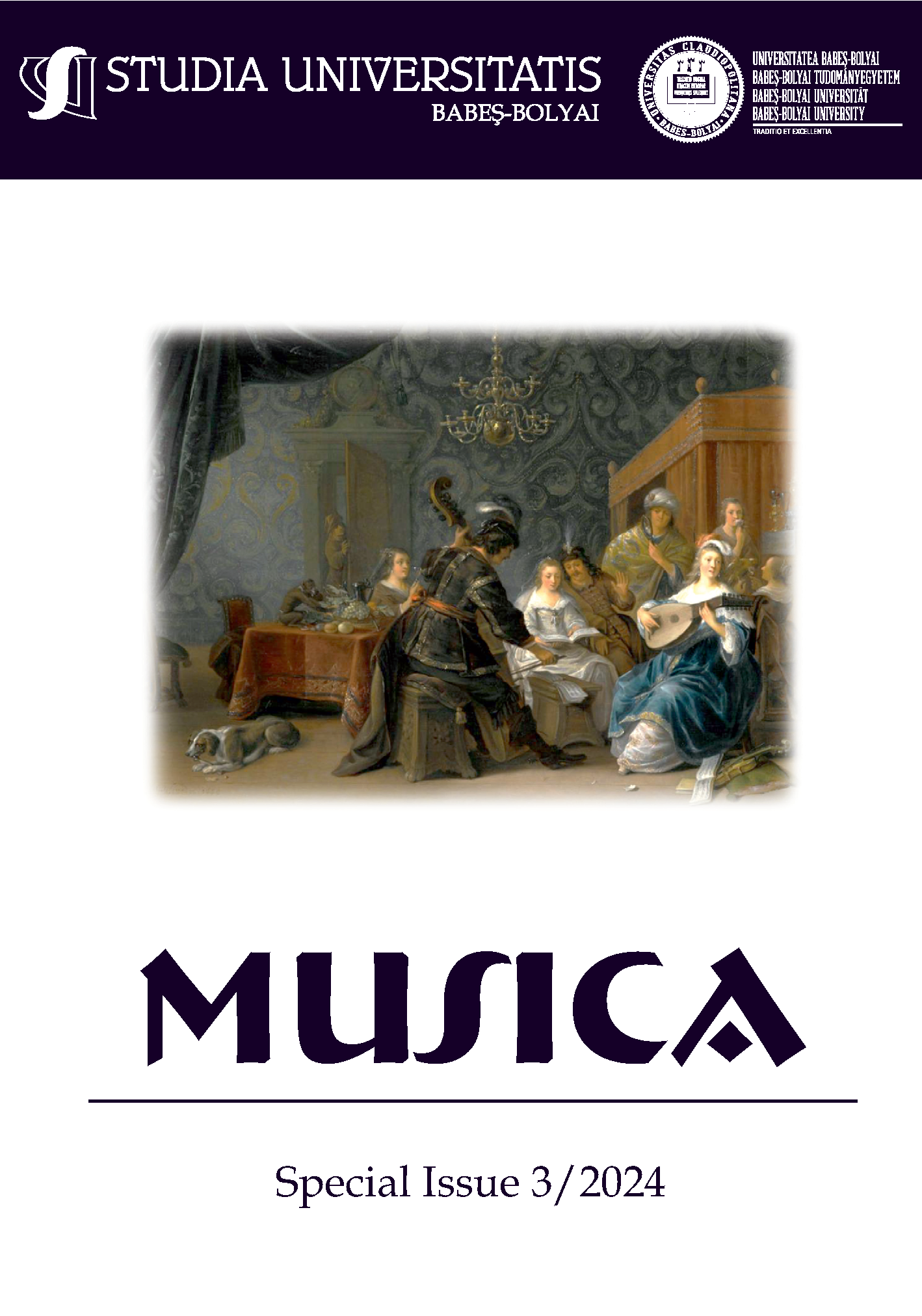Veni Creator for Choir and Organ by Arvo Pärt. The Stylistic and Interpretative Analysis – Conductor’s Guide
DOI:
https://doi.org/10.24193/subbmusica.2024.spiss3.13Keywords:
Veni Creator, Arvo Pärt, Stylistic, interpretative, analysis, conductor, guideAbstract
“Veni Creator”, composed in 2006 at the request of the German Bishops’ Conference, premiered in Fulda Cathedral, Germany, conducted by Franz-Peter Huber. The work, written for mixed choir and organ, is based on the first two stanzas of a well-known Catholic hymn invoking the Holy Spirit. The composition, though fitting within Arvo Pärt’s Tintinnabuli style, diverges in several aspects, including its use of a major key (G major), a fixed meter (3/4), and a precise dynamic range. The piece creates an almost dance-like atmosphere through its melodic and rhythmic interplay between the choir and organ, which is characterized by ascending and descending arpeggiated figures. Stylistically, the work emphasizes nobility and elegance of phrasing, with pure, simple vocal delivery. Performers are instructed to maintain intonation accuracy and manage dynamic changes with emotional weight, particularly in moments of diminuendo. The unison between male and female voice pairs is key to achieving timbral homogeneity and attention to phrasing and the interpretation of pauses helps maintain the expressive flow.
References
Atteln, Günter. The lost paradise, descriptive note of the documentary, ACCENTUS Music ACC20321, 2015. (http://accentus.com/productions/arvopaert-robertwilson-thelostparadise)
Hillier, Paul. Arvo Pärt, Oxford University Press, New York, 1997
Pärt, Arvo. Veni creator, ©2006 by Universal Edition, Wien/UE 33397
Shenton, Andrew. The Cambridge Companion to Arvo Pärt, ed. Andrew Shenton, Cambridge University Press, 2012.
Downloads
Published
How to Cite
Issue
Section
License
Copyright (c) 2024 Studia Universitatis Babeș-Bolyai Musica

This work is licensed under a Creative Commons Attribution-NonCommercial-NoDerivatives 4.0 International License.



